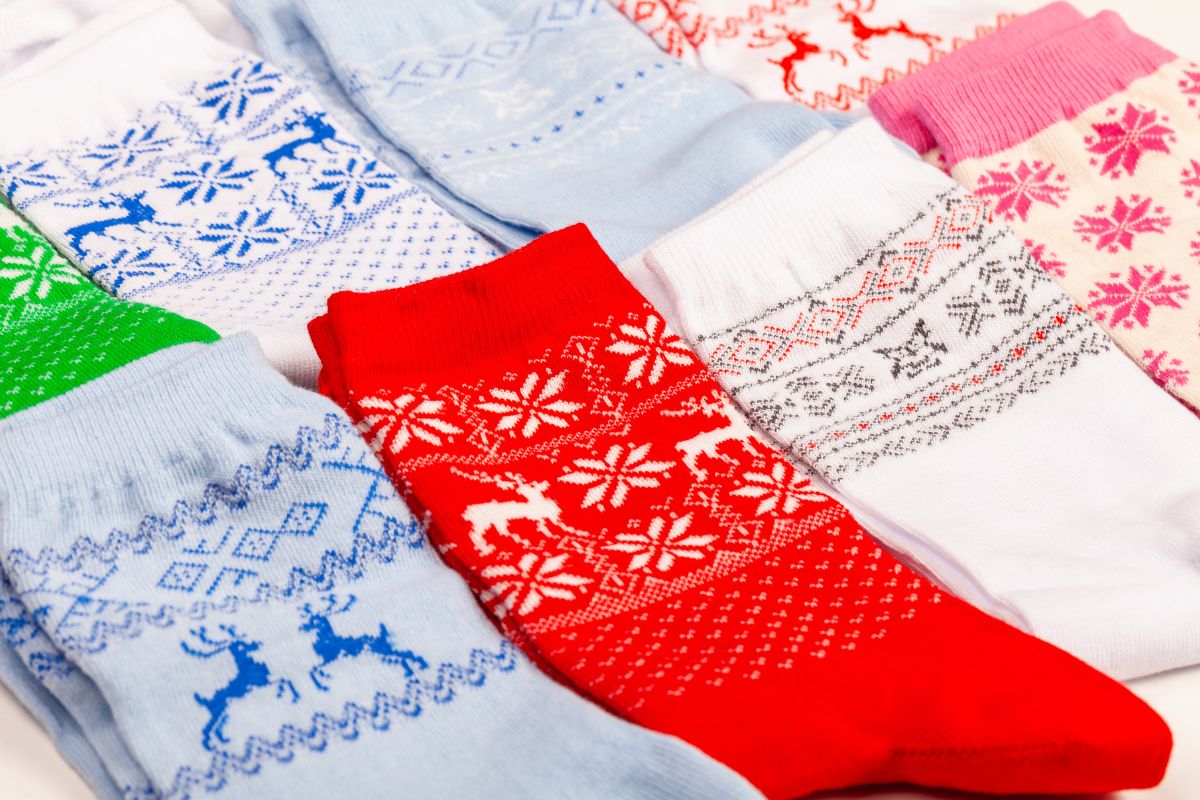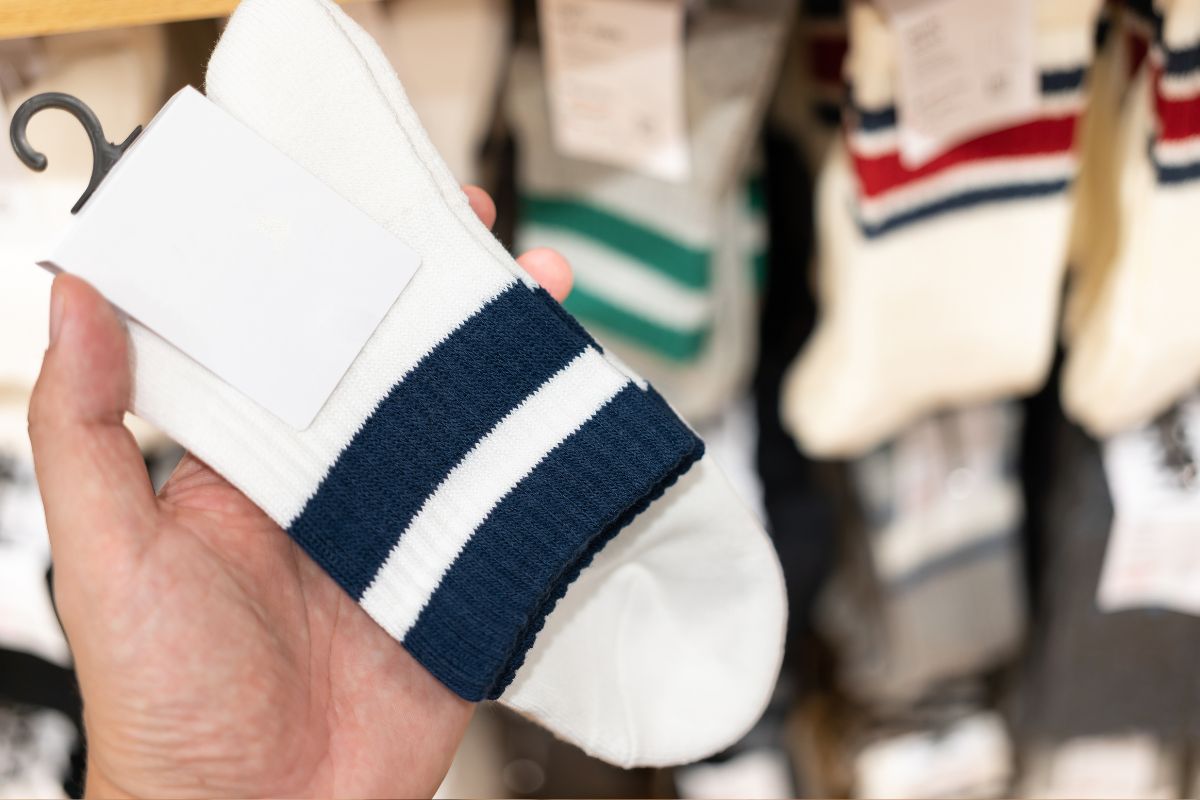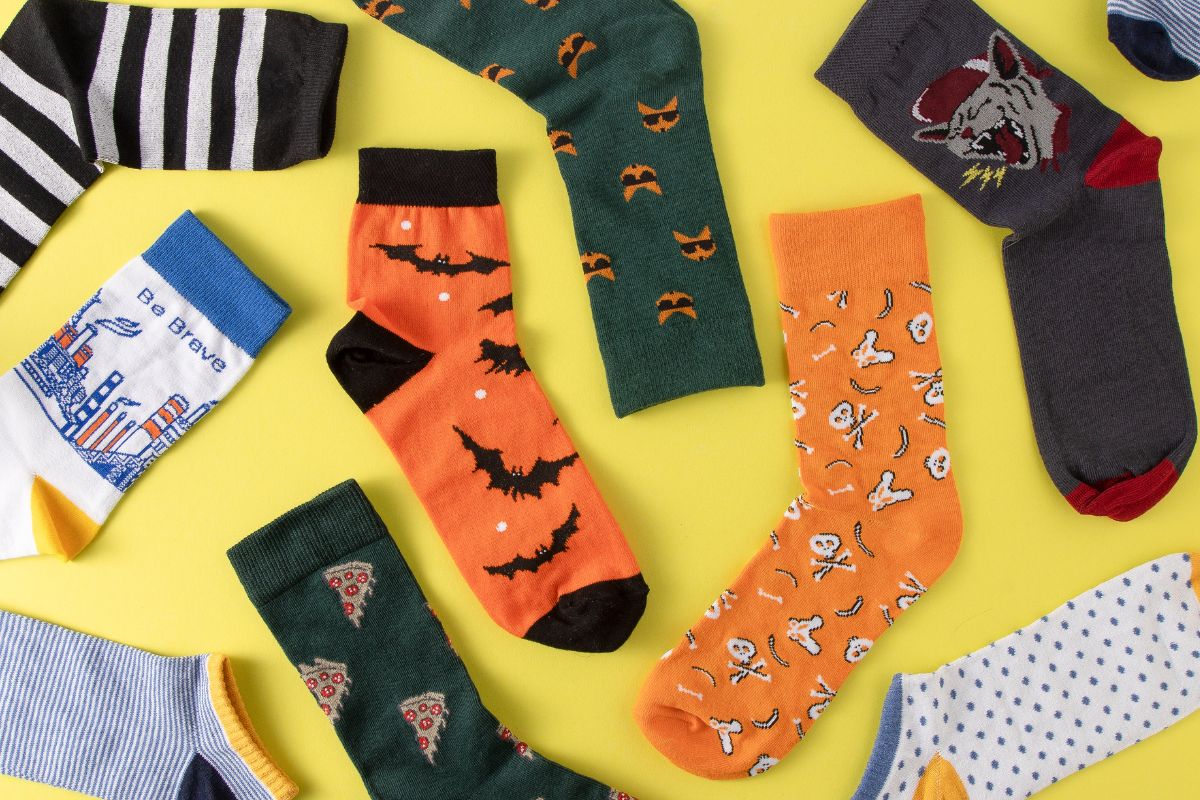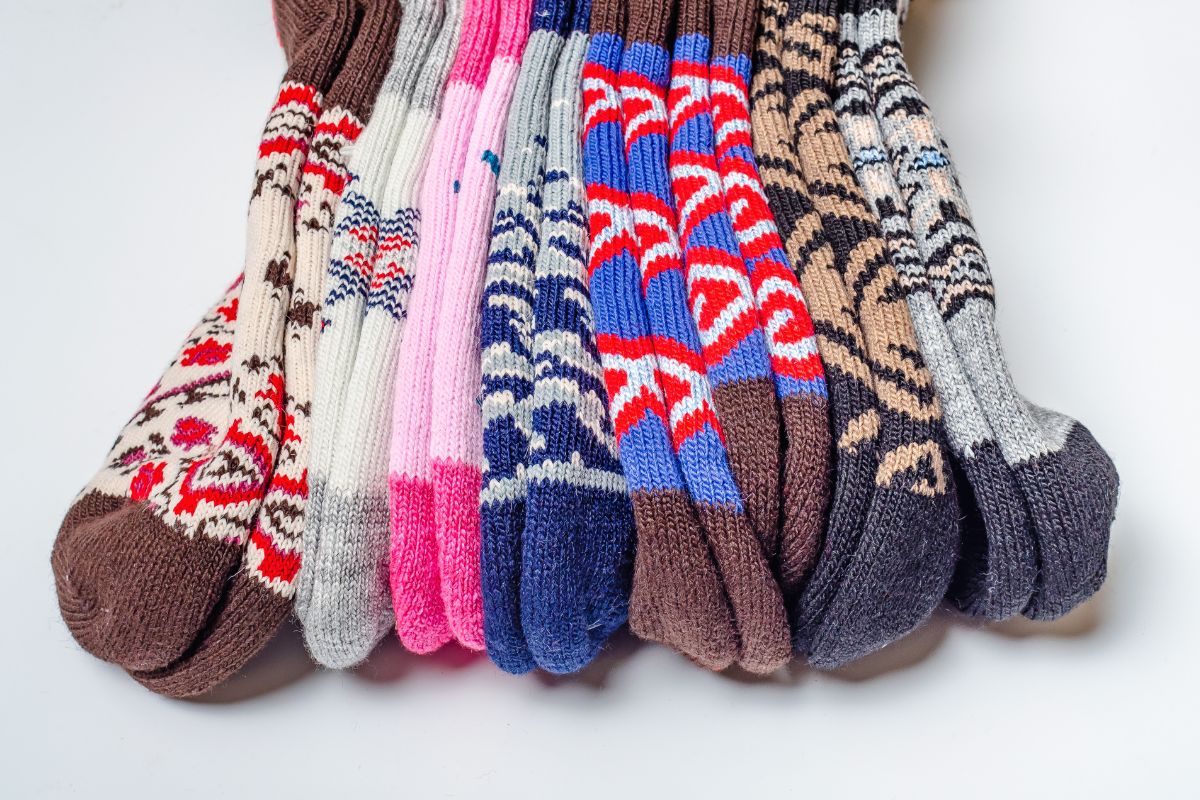Starting a sock business can be a rewarding venture if you have a passion for fashion and creativity. To succeed, you need to focus on a clear plan. This includes choosing your selling method, designing unique socks, and understanding your target market. With the right approach, you can carve out a niche in the competitive sock market.
As you begin, consider whether you want to sell your socks online or in retail stores. Each option has its advantages and challenges. Researching current trends and your potential customers will guide your decisions on product design and pricing.
Comprehensive Table of Contents for Launching Your Sock Business
- Understanding the Sock Market
- Crafting Your Business Plan
- Establishing Your Business Structure
- Creating Your Brand Identity
- Product Development
- Setting Up Your Online Presence
- Operating Your Sock Business
- Marketing and Sales Strategies
- Expanding Your Business
- Frequently Asked Questions
- What are the initial steps to starting an online sock business?
- What are the average startup costs for a new sock company?
- How can one make a profit from a sock business?
- Can you start a sock business from home, and if so, how?
- What are some effective strategies for marketing a sock business?
- What legal considerations are there when setting up a sock business?
Once you have a plan, sourcing materials and choosing a reliable supplier are crucial steps that will impact your business quality and costs.
Creating eye-catching designs is essential. Your socks should reflect your brand’s identity and appeal to your target audience.
Engaging marketing strategies will help you reach potential customers and build a loyal following. With thoughtful planning and creativity, you can successfully launch and grow your sock business.
Understanding the Sock Market
To successfully start your sock business, it’s essential to know the current state of the sock market. You need to analyze trends, identify who your customers will be, and understand your competition. This knowledge will help you make informed decisions as you launch and grow your business.
Analyzing Market Trends
The global sock market is projected to reach approximately $24.16 billion by 2026. This growth is fueled by rising consumer demand for both fashionable and functional socks.
Market trends show a preference for sustainability, with eco-friendly materials gaining popularity.
You should keep an eye on trends like custom designs and subscription services. Incorporating these elements can attract more customers.
Regularly conducting market research will help you stay updated on these shifts. Use surveys and focus groups to gather insights about what consumers want.
Identifying Your Target Audience
Understanding your target audience is key to your success. Start by considering demographics, such as age, gender, and income levels. For example, younger consumers may prefer stylish and trendy socks, while older customers might focus on comfort and durability.
Additionally, think about lifestyle factors. Athletes or outdoor enthusiasts might look for specialized socks designed for performance.
Create detailed customer personas to identify their preferences. This will guide your product design and marketing strategies effectively.
Competitive Analysis
Before launching your sock business, conduct a competitive analysis. Identify existing players in the market and understand their strengths and weaknesses.
Examine what types of socks they offer, their pricing strategies, and their marketing approaches.
You can categorize competitors into different segments, such as high-end brands, budget-friendly options, and niche players. This will help you find a gap that your business can fill.
Consider what unique value you can offer to differentiate yourself.
Staying informed about your competition will allow you to adapt and thrive in the dynamic sock market.
Crafting Your Business Plan
| Step | Action Plan | Details |
|---|---|---|
| 1. Choose a Niche | Identify a profitable sock category | Examples: Athletic socks, luxury socks, novelty/funny socks, sustainable socks, custom socks |
| 2. Design Your Socks | Create unique and appealing designs | Use tools like Canva, Photoshop, or hire a designer |
| 3. Select a Business Model | Decide between print-on-demand (POD) or bulk manufacturing | POD (Printify, Printful) for low investment, bulk for better margins |
| 4. Find a Reliable Supplier | Choose a manufacturer or POD provider | Compare pricing, material quality, and shipping times |
| 5. Set Up an Online Store | Sell on Shopify, Etsy, Amazon, or your own website | Optimize listings with SEO-friendly descriptions and images |
| 6. Determine Pricing Strategy | Set profitable pricing (cost + 2.5-3x markup) | Example: If socks cost $5, sell for $15-$20 |
| 7. Branding & Packaging | Create a unique brand identity with custom packaging | Enhances customer experience and brand loyalty |
| 8. Marketing & Promotion | Use social media ads, influencer marketing, and SEO | Platforms: Instagram, TikTok, Pinterest, Facebook Ads |
| 9. Offer Great Customer Service | Provide easy returns, fast shipping, and good communication | Builds trust and encourages repeat buyers |
| 10. Scale Your Business | Expand product lines, offer subscriptions, or target wholesale | Increases revenue streams and long-term growth |
Creating a solid business plan is crucial for your sock business. This plan outlines your brand identity, marketing strategy, and financial goals. Each part builds a roadmap that guides your business toward success.
Defining Your Sock Brand
Your brand sets you apart from competitors. Start by identifying your target audience. Decide whether you want to cater to sports enthusiasts, fashion-conscious consumers, or a specific niche.
Next, think about your brand’s personality. Will it be fun and quirky or classic and elegant?
Create a unique brand name that resonates with your target market.
Consider your product range. Will you offer colorful patterns, eco-friendly materials, or custom designs?
All these elements convey your brand’s message and help you connect emotionally with customers.
Developing a Marketing Strategy
A good marketing strategy boosts awareness of your sock business. Begin with market research to understand your audience and competition.
Use multiple channels to reach customers. Social media is essential for brand visibility. Instagram and TikTok are effective for showcasing designs and connecting with potential buyers.
Next, consider promotions and advertising. Email campaigns, influencer partnerships, and targeted ads can effectively attract new customers.
Don’t forget about your website. It should be user-friendly and visually appealing. Provide clear information about your products and easy checkout options.
Building a Financial Plan
Your financial plan outlines startup costs and future projections.
Begin by estimating costs for equipment, supplies, and marketing. A reliable estimate can range from $500,000 to $2 million, depending on your business’s scale.
Next, develop financial projections. Outline expected sales and profits for the next few years. This will give you and potential investors a clear view of your business’s growth potential.
Having a strong financial plan helps manage your resources wisely and ensures you’re prepared for challenges.
Establishing Your Business Structure

Creating the right business structure is a crucial step for your sock business. This impacts everything from taxes to liability. You need to decide on your legal structure, handle registration, and ensure proper licensing.
Choosing a Legal Structure
You can choose from several legal structures for your sock business. The most common options include:
Sole Proprietorship: This is the simplest form, where you own the business entirely. It’s easy to set up but offers no personal liability protection.
Limited Liability Company (LLC): An LLC provides personal liability protection while allowing flexibility in taxation. This is a popular choice for many small businesses.
Corporation: This structure limits personal liability and can be beneficial if you plan to expand. However, it involves more regulations and paperwork.
Consider your business size and goals when selecting a structure. Consulting with a legal expert can also help you make an informed choice.
Business Registration Steps
Once you choose a structure, registering your business is essential.
First, select a unique business name and check its availability. You can usually do this through your state’s business registry.
Next, you will need to fill out the required forms specific to your chosen structure. For an LLC or corporation, this often includes Articles of Organization or Articles of Incorporation.
After that, you must obtain an Employer Identification Number (EIN) from the IRS. This is necessary for tax purposes and often required when opening a business bank account.
Obtaining Licenses and Permits
Before launching, you need to check what licenses and permits are necessary for your sock business. This can vary by location and industry.
Start with local regulations to determine if you need a general business license. If you plan to sell online, you may also need a sales tax permit.
Additionally, consider liability insurance to protect against potential risks. Researching your area’s specific requirements can help ensure you comply with all laws before opening your business.
Creating Your Brand Identity
| Tip | Description |
|---|---|
| 1. Know Your Target Audience | Understand the preferences and needs of your target audience, whether it’s athletic, casual, or fashion-focused. |
| 2. Create a Memorable Logo | Design a simple, unique, and recognizable logo that reflects the style and ethos of your socks business. |
| 3. Develop a Color Palette | Choose colors that represent your brand values and appeal to your target audience. Stick to a consistent palette. |
| 4. Unique Packaging | Stand out with creative and functional packaging that reinforces your brand identity and adds a premium touch. |
| 5. Consistent Brand Voice | Define your brand’s voice and tone (playful, luxurious, fun, etc.) to maintain consistency across all communication channels. |
| 6. Craft a Compelling Story | Share the story behind your brand, such as its origin, mission, and values, to connect with your customers emotionally. |
| 7. Offer Unique Designs | Create socks with unique patterns, themes, or features that differentiate your product from competitors. |
| 8. Collaborate with Influencers | Partner with influencers who align with your brand to expand your reach and build credibility. |
| 9. Provide Exceptional Customer Service | Offer easy returns, fast responses, and personalized customer care to build loyalty and trust. |
| 10. Leverage Social Media | Use social media platforms to showcase your products, engage with customers, and run targeted ads to grow your brand. |
Building a strong brand identity is essential for your sock business. It helps you stand out and connect with your target audience. Key elements include designing a unique logo, developing a compelling brand story, and trademarking your brand. Let’s look at these in detail.
Designing a Unique Logo and Color Palette
Your logo is often the first thing people see. It should reflect the essence of your brand. Aim for simplicity and memorability.
Consider these elements:
- Shapes: Use shapes that relate to your brand message.
- Fonts: Choose fonts that match your style.
- Color Palette: Select 2-3 main colors that evoke the feelings you want your customers to associate with your socks.
For instance, bright colors can suggest fun, while softer tones may imply comfort. Consistency in logo and colors helps build recognition.
Developing Brand Story and USP
Every brand has a story. Yours explains why you started the sock business and what makes it different. This is your Unique Selling Proposition (USP).
Craft a narrative that resonates with your customers.
- Personal Touch: Share your journey or inspiration behind the designs.
- Values: Highlight what your brand stands for, like sustainability or creativity.
This connection encourages loyalty. Your brand story gives customers a reason to choose your socks over competitors.
Trademarking Your Brand
Trademarking protects your brand identity. Once you’ve selected a name and logo, consider registering them as trademarks. This step prevents others from using your brand elements.
Things to remember:
- Search Existing Trademarks: Ensure your chosen name isn’t already taken.
- File Your Application: Follow legal steps to secure your trademark.
This protection adds credibility to your business and assures customers you’re serious about your brand. Taking these steps helps establish a solid presence in the sock market.
Product Development

Developing your sock product involves careful planning and creativity. Focus on designing your sock collections, sourcing the right materials, and finalizing the manufacturing process to ensure quality and appeal.
Designing Sock Collections
When creating your sock collections, think about the types of socks you want to offer. There are many options including athletic, dress, and casual socks.
Use unique designs to stand out, play with colors, patterns, and styles.
Trends in fashion can guide your designs. Research what styles are popular so you can capture attention. Consider your target market and what they would find appealing.
Sketch out ideas or use design software to visualize your concepts.
Once you have a few solid designs, create prototypes. This allows you to see your ideas in action and make adjustments before the final product. Gathering feedback from potential customers on your prototypes is beneficial for improvement.
Sourcing Quality Materials
Quality materials define the comfort and durability of your socks. Look for options that balance functionality and style. Common materials include cotton, wool, and bamboo. Each material has unique benefits.
Eco-friendly materials are gaining popularity. They not only appeal to environmentally-conscious consumers but also set your brand apart. Research suppliers that focus on sustainable practices.
When sourcing, consider cost, reliability, and location. This will affect your production timelines and shipping costs.
Build relationships with your suppliers to ensure you have a consistent and quality supply chain.
Finalizing the Manufacturing Process
After solidifying your designs and sourcing materials, focus on the manufacturing process.
Choose between local and overseas manufacturers based on cost, quality, and communication.
Visit potential factories if possible to assess their operations and meet with manufacturers. Ensure they follow ethical practices and labor standards.
This enhances your brand’s reputation and creates a positive impact.
Establish clear orders, timelines, and quality checks. Create a checklist for every production run to maintain consistency in sock manufacturing. Continuous communication with your manufacturer will help prevent issues and keep your business moving smoothly.
Setting Up Your Online Presence
| Tip | Description |
|---|---|
| 1. Build a User-Friendly Website | Create a website that’s easy to navigate, mobile-optimized, and showcases your socks with high-quality images and detailed descriptions. |
| 2. Secure an E-commerce Platform | Choose a reliable e-commerce platform (like Shopify, WooCommerce, etc.) that supports easy transactions and inventory management. |
| 3. Optimize for SEO | Use SEO best practices, such as using relevant keywords (e.g., “premium socks” or “fun patterned socks”) in your product listings and blog content to increase organic search traffic. |
| 4. Social Media Presence | Establish profiles on platforms like Instagram, Facebook, and TikTok to connect with customers and share creative sock designs, promotions, and user-generated content. |
| 5. Content Marketing | Start a blog or video series on your website, covering topics like sock care, fashion trends, or behind-the-scenes of your business to engage your audience. |
| 6. Set Up Payment Gateways | Offer multiple payment methods (credit cards, PayPal, etc.) to provide a seamless checkout experience for your customers. |
| 7. Implement Email Marketing | Collect email addresses from customers and visitors to send newsletters, promotions, and personalized product recommendations. |
| 8. Customer Reviews & Testimonials | Showcase positive customer feedback on your website to build trust and credibility, helping future customers feel confident in your product. |
| 9. Invest in Paid Advertising | Use Google Ads or social media ads to target potential customers, especially those interested in fashion or activewear, with relevant sock products. |
| 10. Use Analytics to Track Performance | Set up Google Analytics to monitor website traffic, user behavior, and sales performance, helping you make data-driven decisions to optimize your online presence. |
Creating an effective online presence is essential for your sock business. You will need to focus on building a strong e-commerce website, optimizing for search engines and email marketing, and leveraging social media to attract customers.
Building an E-commerce Website
To sell socks online, consider using a website builder like Shopify. This platform is user-friendly and suited for beginners.
Choose a clean, appealing design that showcases your sock styles effectively.
Key elements to include:
- High-quality images of your products
- Detailed product descriptions with sizing and fabric information
- An easy-to-navigate shopping cart for a smooth checkout process
- Payment options like PayPal and credit cards to increase sales
Additionally, ensure your website is mobile-friendly since many customers shop on their phones.
Implementing SEO and Email Marketing
Search Engine Optimization (SEO) will help your online store rank higher on search engines.
Conduct keyword research specific to selling socks. Use these keywords in product titles, descriptions, and blog posts.
Basic SEO strategies:
- Use meta tags and alt text for images
- Ensure fast page load times
- Create valuable content related to socks, such as care tips or style guides
Also, use email marketing to keep customers engaged.
Build an email list by offering discounts or exclusive styles.
Send regular newsletters featuring new arrivals and promotions to drive repeat sales.
Leveraging Social Media Platforms
Social media platforms can significantly boost your brand awareness and sales. Create business profiles on popular platforms like Instagram, Facebook, and Pinterest.
Share visually appealing content, including lifestyle shots of your socks being worn.
Social media strategies to consider:
- Use hashtags to increase reach
- Engage with followers by responding to comments and messages
- Run targeted ads to attract specific audiences interested in unique or fashionable socks
Consider collaborating with influencers to tap into their audience and build credibility.
Regularly posting and interacting with your audience can enhance customer loyalty and drive online sales.
Operating Your Sock Business

Running a sock business requires careful management of inventory, a focus on customer service, and a solid understanding of pricing strategies. Each of these elements plays a vital role in ensuring your business thrives.
Inventory Management and Fulfillment
Efficient inventory management is key. You need to track your sock inventory closely to meet demand.
Use software tools to monitor stock levels, sales trends, and reorder points.
Consider implementing a system like Just-In-Time (JIT) to reduce excess inventory and storage costs. Keep data on popular designs and sizes to optimize your stock.
For fulfillment, decide whether to handle shipping in-house or use third-party logistics (3PL).
If using 3PL, research companies with good reputations. An effective fulfillment process helps you deliver products on time, enhancing customer satisfaction.
Creating an Excellent Customer Service Experience
Customer service can set you apart from competitors.
First, respond promptly to inquiries and comments, using email or social media.
Train your staff to handle returns and complaints effectively.
Consider offering a 30-day return policy to instill confidence in buyers. This encourages purchases by reducing perceived risk.
You could also create a FAQs section on your website. This helps customers find answers quickly, improving their experience.
Lastly, consider feedback tools to gather insights on customer satisfaction.
Understanding Wholesale and Retail Pricing
Setting the right prices is crucial for profit. Start by analyzing your costs, including production and shipping.
Retail price should be high enough to cover expenses and leave a margin. A common rule is to mark up 2.5 to 3 times your wholesale cost.
When dealing with wholesale accounts, offer discounts based on order volume. Keep in mind that strong relationships with retailers can lead to steady sales.
Evaluate your distribution channels carefully. Online platforms might have different pricing strategies compared to brick-and-mortar stores. This awareness allows for competitive pricing that attracts more customers.
Marketing and Sales Strategies
| Strategy | Description |
|---|---|
| 1. Social Media Marketing | Leverage Instagram, Facebook, and TikTok to showcase your designs, run giveaways, and engage with your audience through polls, stories, and posts. |
| 2. Influencer Collaborations | Partner with influencers, particularly fashion or lifestyle bloggers, to showcase your socks and expand your reach to a larger audience. |
| 3. Limited-Edition Drops | Create urgency by offering exclusive, limited-edition sock designs, encouraging customers to act fast and generating excitement around your brand. |
| 4. Subscription Boxes | Offer a monthly subscription service where customers receive new, unique socks regularly. This fosters repeat sales and builds brand loyalty. |
| 5. Affiliate Marketing | Set up an affiliate program to encourage bloggers and content creators to promote your socks in exchange for commissions on sales they drive. |
| 6. Retargeting Ads | Use retargeting ads on platforms like Facebook and Google to bring back visitors who didn’t make a purchase the first time, offering them discounts or special offers. |
| 7. Email Campaigns & Newsletters | Send out email campaigns with personalized product recommendations, special offers, and updates on new sock collections to drive sales. |
| 8. Discounts & Promotions | Offer discounts, bundling deals (e.g., buy 3 pairs, get 1 free), or seasonal sales to incentivize purchases and attract new customers. |
| 9. Cross-Promotions with Other Brands | Team up with complementary brands (e.g., athletic apparel brands) to run cross-promotions or bundle your socks with their products, reaching a wider audience. |
| 10. Engaging Website with Upsells | Enhance your e-commerce website with upselling opportunities like adding extra pairs of socks or special accessories (e.g., sock organizers) at checkout to increase the average order value. |
| 11. Local Pop-Up Events | Host pop-up shops or participate in local events to physically engage with your customers, increase brand visibility, and drive sales through face-to-face interaction. |
| 12. Customer Referral Program | Set up a referral program that rewards customers with discounts or free products when they refer friends and family, expanding your customer base through word-of-mouth. |
Effective marketing and sales strategies are key to growing your sock business. By understanding your target customers and leveraging modern marketing channels, you can boost brand awareness and drive sales.
Developing Influencer Partnerships
Teaming up with influencers can significantly expand your reach.
Identify fashion bloggers and social media personalities who align with your brand values. Choose individuals who have an audience interested in unique and trendy apparel.
You can create tailored campaigns where influencers showcase your socks. Provide them with free samples, and encourage them to share their honest reviews.
Consider using discount codes specific to their audience to track engagement and sales.
Regularly assess the success of these partnerships. Look at engagement rates, sales spikes, and new followers gained during campaigns. This data helps you refine your influencer marketing strategy.
Offering Subscription Services
Subscription services are a unique way to build customer loyalty and ensure repeat sales.
You can create a monthly box that features exclusive sock designs. This allows customers to discover new styles regularly and adds excitement.
Set clear pricing and flexible options for your subscription plans. Offer choices, such as a mix of themed designs or personalized selections based on customer preferences. This tailored approach makes customers feel valued.
Consider using social media and your website to promote your subscription service. Highlight customer testimonials and unboxing experiences online to generate interest. Including a referral program can also encourage subscribers to share your service with friends and family.
Exploring Pop-Up Shops and Retail Opportunities
Pop-up shops offer a great way to connect with local customers and test new markets. Find events or markets related to fashion and accessories where you can set up a temporary shop.
Ensure your display is eye-catching and showcases your unique sock designs. Offering limited-time discounts can create urgency and attract more visitors.
Additionally, look for retail partnerships with local boutiques. By placing your socks in established stores, you can reach a broader customer base. Be clear about pricing and share promotional materials with the store. This ensures they understand your brand and can effectively sell your products.
Expanding Your Business

When looking to grow your sock business, consider diverse strategies that align with your goals. This includes using print-on-demand services, scaling up your production, and securing the necessary funding.
Exploring Print-on-Demand Services
Print-on-demand services allow you to create sock designs without holding inventory. This model reduces your startup costs and minimizes financial risks. You can easily test new designs and adjust based on customer feedback.
Here are steps to implement this:
- Choose a Reliable Supplier: Research companies that specialize in sock printing. Check their quality and shipping times.
- Create Unique Designs: Focus on eye-catching patterns that reflect your brand.
- Market Your Designs: Use social media and online platforms to showcase your offerings.
By utilizing print-on-demand, you can adapt quickly and focus on creativity while keeping overhead low.
Scaling Up Production
Scaling production is essential for meeting increased demand. Investing in knitting machines can improve efficiency and quality. These machines automate much of the production process, allowing you to produce more socks in less time.
Consider the following:
- Invest in Equipment: Purchase high-quality knitting machines that meet your production needs.
- Streamline Operations: Organize production workflows to maximize efficiency. This may involve hiring skilled staff or training existing employees.
- Maintain Quality Control: Implement checks to ensure each product meets your quality standards.
With these strategies, you can enhance your production capabilities and cater to a larger market.
Securing Funding and Investment
Funding is crucial for growth. Consider various options such as personal savings, loans, or seeking investors. Each option has its pros and cons that you should assess based on your business needs.
Here are some funding options:
- Crowdfunding Platforms: Use websites like Kickstarter to raise capital while gaining exposure.
- Angel Investors: Look for business professionals interested in supporting startups in your industry.
- Small Business Loans: Approach banks or credit unions that offer loans tailored for small businesses.
Securing the right funding allows you to invest in equipment, marketing, and inventory, paving the way for business growth.
Frequently Asked Questions
When starting a sock business, you may have several questions. This section addresses key topics such as initial steps, startup costs, profit strategies, and marketing approaches.
What are the initial steps to starting an online sock business?
To start an online sock business, first, identify a target market.
Research trends to find unique designs that appeal to customers. Next, develop a business plan that outlines your goals and strategies. Finally, set up an online store through platforms like Shopify or Etsy.
What are the average startup costs for a new sock company?
Startup costs for a sock business can vary. You might spend between $2,000 and $5,000 on product design. Sampling costs can range from $1,000 to $3,000.
Additional expenses include materials, equipment, and marketing, which can add to the overall budget.
How can one make a profit from a sock business?
To make a profit, focus on producing quality socks at a competitive price.
Pinpoint your niche market and create unique designs that stand out. Effective pricing strategies, along with strong marketing efforts, can boost sales and increase revenue.
Can you start a sock business from home, and if so, how?
Yes, you can start a sock business from home.
Begin by creating your designs and sourcing materials. Use a knitting machine for production or partner with a manufacturer. Then set up an online store to reach customers effectively.
What are some effective strategies for marketing a sock business?
For marketing, utilize social media platforms to showcase your socks.
Collaborate with influencers to expand your reach. Building an email list can also help you stay connected with customers. Offer promotions or discounts to attract new buyers.
What legal considerations are there when setting up a sock business?
When starting a sock business, it’s important to register your business name and obtain necessary licenses.
Consider trademarks for your designs to protect your brand.
Also, understand tax regulations and sales tax requirements in your area to ensure compliance.



